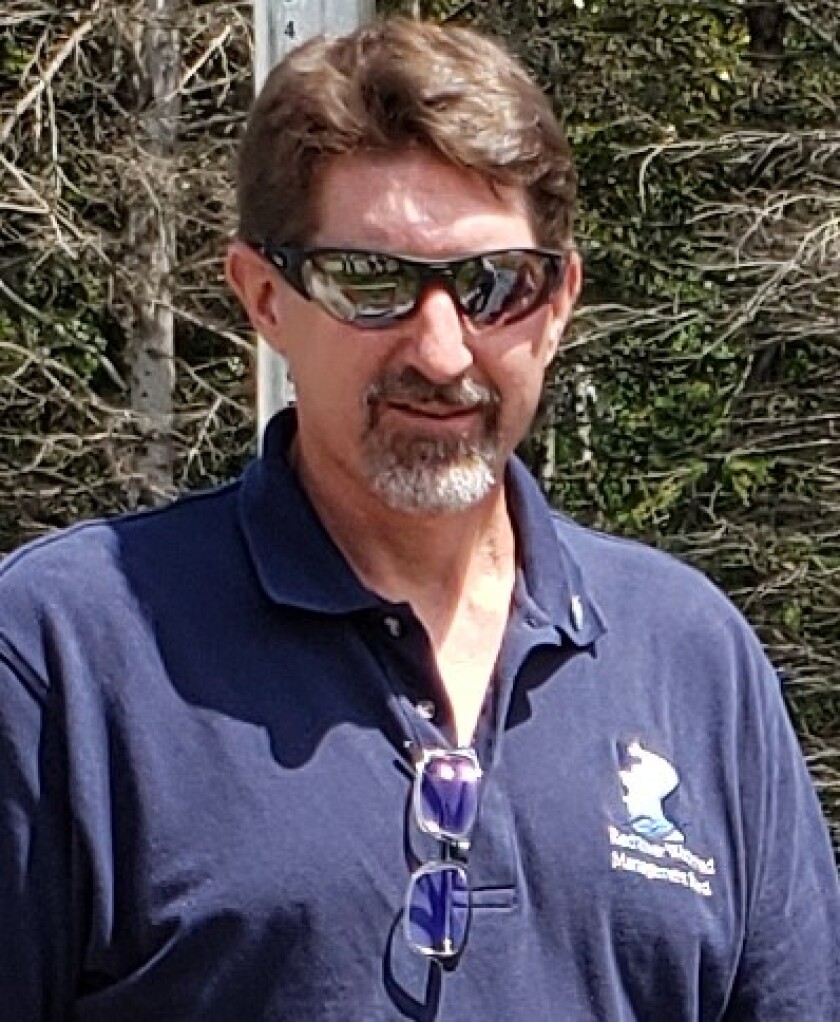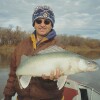GRAND FORKS — Farmers, watershed managers and others with an interest now have easy access to precise information on land elevations and similar data in the Minnesota portion of the Red River Basin with the completion of an extensive mapping project using LiDAR remote-sensing technology.
Short for “Light Detection and Ranging,” LiDAR utilizes laser pulses to gather highly accurate measurements of terrain and structures such as ring dikes, a key component of flood control in the Red River Basin .

The Red River Watershed Management Board (RRWMB) and the Fargo-based International Water Institute (IWI) rolled out the new LiDAR database in late March. It’s free, easy to use and doesn’t require special software or a password to access, according to Rob Sip, executive director of the Red River Watershed Management Board in Ada, Minnesota.
The new data is available on the IWI’s online map portal at gisapps.iwinst.org/map-portal. The portal allows users to access the LiDAR data in 1- and 5-foot contours. Shaded areas provide information on other landscape features and water flow pathways.

“A farmer or landowner can sit in their tractor using their smartphone or other electronic devices and can look at elevation data and contours in the fall while cleaning and maintaining ditches,” John Finney, RRWMB president and a retired farmer from Humboldt, Minnesota, said in a statement. “The IWI Map Portal is a point and click environment, is easy to maneuver around in, and you can’t break it, plus spot elevation data can be found anywhere you click on a particular field or area of interest.”
ADVERTISEMENT
Users also can “snap a line” to gather elevation profiles between two points on a map. The new data builds on an existing 2009 LiDAR database that wasn’t as precise, Sip said in an interview.
“The old data is like 6 inches or more accuracy, and this is 3- to 4-inch accuracy, so it’s almost twice as good for precision and accuracy,” he said.
Collecting the data
To collect the data, the RRWMB contracted with the Colorado-based Sanborn Mapping Co., in 2021 to acquire LiDAR information over 20,034 square miles of northwest Minnesota.
The company began collecting the LiDAR data in October 2021 and completed the effort in early November 2021.
That was the easy part, Sip says; the most difficult – and time-consuming – part was going through the “massive amount of data” the company collected to ensure it met federal standards set by the U.S. Geological Survey.
Using specialized software, International Water Institute staff pored through more than 60 billion data points as part of the LiDAR quality control effort.
“Today’s computing power, software and technology has been a game changer for us compared to when the IWI worked on the original 2009 LiDAR,” Chuck Fritz, executive director of the IWI, said in a statement. The quality-control process was “quite involved,” Fritz said, and the IWI needed to update its computer hardware to deal with the magnitude of data.
ADVERTISEMENT
High-tech sensors
According to Sip, the Sanborn company used three airplanes following specified flight patterns to divvy up the Minnesota portion of the Red River Valley into five survey blocks.
“These planes have like – I’m not joking – million-dollar sensors that capture the data,” he said. “Basically, it’s just shooting a laser down to the surface of the earth, and it measures how quick (the laser pulse) returns back to the plane, and then that tells the elevation of whatever’s on the ground.”
Another contractor had to collect 800 ground survey control points across the Minnesota portion of the Red River Valley, Sip says, a process that was delayed by severe winter conditions and spring flooding in 2022.
“That all helps with the quality assurance and quality control, but it’s just a ton of data,” Sip said.
More precise info available
Perhaps 99% of the people who use the LiDAR data will access the information from the IWI’s online mapping portal, Sip says, but even more precise information is available for GIS experts and “computer geeks” on a different platform.
“We also have a building footprint layer, so you can go into a geodatabase explorer and see building footprints in, kind of like 3D,” he said. “So, even from a planning and zoning purpose, there’s applicability there.”
The new LiDAR data also revealed the location of 658 ring dikes, Sip said.
ADVERTISEMENT
“We never knew where all the farmstead ring dikes were,” he said. “We found that out using machine learning, and then the IWI staff physically viewed each one on a computer screen to verify.
“There was some existing data from the watershed district about where they were located, but not a lot.”
2021 Ring Dike Map Using LiDAR (003) by Brad Dokken on Scribd
Other uses
According to the RRWMB, other known benefits of LiDAR data include:
- More accurate flood plain maps to mitigate flood damages and to work toward flood and drought resiliency.
- Enhanced emergency preparedness.
- Targeted wetland and wildlife habitat restoration.
- Enhanced planning and project development related to transportation infrastructure, land use management, and human development.
- Enhanced understanding of river channel migration and slope stability.
- Detailed surface hydrologic and hydraulic modeling.
- Efficient/equitable natural resources management.
- Increased agricultural productivity.
- Innovative tools for conflict resolution.
- Problem identification.
- Cost reduction in all civic projects.
The RRWMB, non-member watershed districts and counties paid for the project using local taxpayer dollars from the Red River Basin of Minnesota. No state or federal funds were used, and the total project cost was about $2.4 million, or $135 per square mile. Current state or federal managed LiDAR projects can be over $300 per square mile, the RRWMB said.










